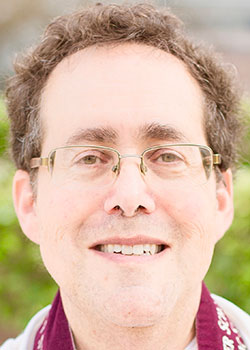We live in an age awash in nostalgia for the good old days that never were. In speeches, movies, paintings, and stories, we invent a time in which there was no crime, no violence, in which men were chivalrous and women were modest. In that fantasy world, father knew best and mother was the happy homemaker. Children, of course, were seen but not heard.
Our visions of that paradise reveal more about the tensions and problems of our own era than they do about any ages past. There was no perfect time, no era of devoted husbands and contented wives raising perfect children. Each period suffered from its own shortcomings and revealed its own strengths. But we are so burdened by violence in the streets and the schools, by uncertainty about how men and women should be and how they should interact, so conscious of sexual abuse, child abuse, alcohol and drug dependency – and a myriad of other traumas – that we long for a simpler age, even if we have to invent it.
Our drive to nostalgia reveals a real need, a need to look to the past to derive courage, inspiration and direction to heal our own wounds and bandage our own scars. In that search, the Torah provides a lodestar, pointing the way for generations of seeking Jews.
Today’s Torah portion, Mishpatim, is known in Jewish tradition as the sefer ha-brit, the book of the covenant. It contains a collection of laws dealing with civil and criminal matters, as well as other humanitarian considerations.
It begins with a discussion of Hebrew and Canaanite slavery. In that context, it speaks of the amah.
An amah is a girl sold to a man because of her family’s dire poverty She becomes a servant to that man. Because her status is anomalous – she is a part of the family but was acquired in the manner of slave – the Torah here lays out her special prerogatives. According to Professor Nahum Sarna, the “laws safeguard her rights and protect her from sexual exploitation.”
Among the rules the Torah records is the stipulation that the man may select her to become a wife for one of his sons. The Torah further requires that “if [the son] marries another, he must not withhold from this one her food, her clothing, or her conjugal rights.”
In specifying these three things – she’er (food), keshut (clothing), and onah (conjugal rights) – the Torah tells us about the basic necessities for a loving relationship. Love, it seems, needs tangible expression in order to survive. Just saying, “I love you” isn’t enough; that love must be visible in deed.
And what are the deeds that love must produce? Love, according to the Torah, should express itself in a commitment to sustain one’s partner, to provide security for one’s partner and to act in a loving and pleasure-giving fashion. She’er, food, becomes a symbol for all sustenance, and without satisfying one’s needs for sustenance, all protestations of caring become a mockery. Keshut, clothing, is emblematic of physical security, something we also need as a bedrock on which to build our lives. Love cannot survive without sustenance and security.
The last category, onah, is the most intriguing. Rabbinic tradition, as well as the Septuagint, Peshitta and Targums all translate onah as conjugal rights. That reading is unique among all ancient law codes, mandating a healthy and loving sexuality as a necessary component of an adult love relationship.
Note also that this passage of the Torah makes sex the right of the woman and the obligation of the man. Only with her consent (long before the PC requirement of explicit verbal consent) is the man allowed to engage with her in sex.
For the Torah, then, as for later rabbinic writings, sex is an integral part of committed, adult love. Avoiding the extremes of hedonistic indulgence or of puritanical denial, the Torah points the way to a love that is grounded both in the body and in the spirit, a coming together of two people in their wholeness, both physical and emotional.
To love another, the Torah tells us, means to love that entire partner. To love another means to take on responsibility to care for their physical needs, and to nurture their emotional and spiritual journeys. In that kind of complete caring, two neshamot are capable of discovering depths and heights unattainable alone. And in loving with that kind of wholeness, we are able to restore our world to wholeness too.
Shabbat Shalom!

